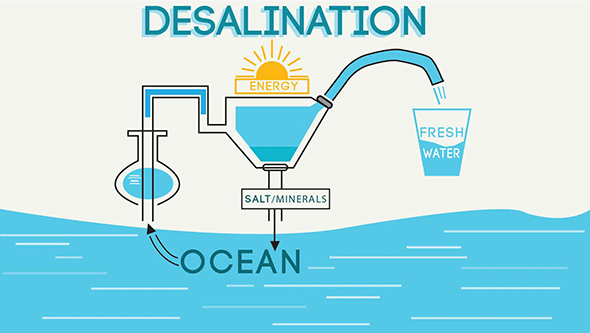Nowhere near enough water has fallen on California in years, and there’s nothing you can do to make it rain. Water prices are rising and multiple tiers are created by LADWP.
So where else can we get water? One idea gaining traction is desalination: converting seawater into drinking water. While desal (desalination) has long been confined by steep costs and environmental concerns, even some critics now say it merits a place in the state’s water portfolio.
South of Los Angeles, in the city of Carlsbad, what will be the nation’s largest desalination facility is nearly ready. For roughly a billion dollars, the plant will produce 7 percent of San Diego County’s water. In Santa Barbara, a plant built amid the drought of the early 1990’s, and idled by the return of rain, could come back online soon and provide 30 percent of the community’s water.
Farther north, another desalination plant is expected to serve several towns in Monterey County.
There are three main environmental considerations when building a desalination plant: how seawater is brought in, how the drinkable water is separated out, and what happens to the salt afterward.
Could be a great idea to use Solar energy since It will take a huge amount of power to pump that much water.
While the technical challenges of designing and constructing an environmentally sound desalination plant are serious, the permitting process is lengthy and could well last longer than the drought itself.
Source: KQED. Thanks for great information.
